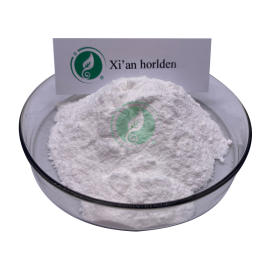-
Categories
-
Pharmaceutical Intermediates
-
Active Pharmaceutical Ingredients
-
Food Additives
- Industrial Coatings
- Agrochemicals
- Dyes and Pigments
- Surfactant
- Flavors and Fragrances
- Chemical Reagents
- Catalyst and Auxiliary
- Natural Products
- Inorganic Chemistry
-
Organic Chemistry
-
Biochemical Engineering
- Analytical Chemistry
- Cosmetic Ingredient
-
Pharmaceutical Intermediates
Promotion
ECHEMI Mall
Wholesale
Weekly Price
Exhibition
News
-
Trade Service
| Propose a model for phase separation to regulate the spatial order of mitochondrial genome |
The multiphase separation model of mitochondrial nuclear-like self-assembly and transcription
.
Photo courtesy of Liu Xingguo's teamThe multiphase separation model of mitochondrial nuclear-like self-assembly and transcription
Phase separation (Phase Separation, also known as phase change) is a process and mechanism by which biological macromolecules use their own properties to spontaneously aggregate and assemble
.
Mitochondria are the only organelles with their own genetic material in mammalian cells
The study found that mitochondrial transcription factor A (TFAM) can be aggregated through phase separation; at the same time, after TFAM binds to the mitochondrial genome, the co-phase separation forms a droplet-like structure
.
An interesting phenomenon is that unlike linear DNA fragments that promote droplet growth, the droplets formed by TFAM and the mitochondrial circular genome are uniform in size, consistent with the size of the body
Mitochondrial transcription is a multi-step, multi-complex transcription machine, including the assembly relay process of transcription initiation complex, transcription extension complex and termination complex
.
The researchers found that each complex of mitochondrial transcription can be recruited by the TFAM-mitochondrial genome through special heterogeneous phase separation, especially the mitochondrial transcription polymerase POLRMT, which is recruited in the outer layer of the nucleoid phase separation to form a shell structure.
Further research found that under the co-phase separation regulation of the transcription extension complex, the barrier of multiphase separation was broken, and the transcription polymerase POLRMT entered the core sphere to assemble the extension complex and perform transcription
.
Finally, the transcription termination complex is recruited through another heavy phase separation to terminate or inhibit mitochondrial transcription
In the long-term evolution of mitochondria, the mitochondrial genome has evolved a simple way that is different from the single transcriptase of archaea to complete transcription, and it is also different from the special pathway of complex regulation of the nucleus
.
Although existing studies have analyzed the structure of the multi-transcription complex of mitochondrial transcription, a model that matches the mitochondrial assembly and transcription machinery has yet to be discovered
The study constructed a new model of mitochondrial nuclear-like phase separation to regulate assembly and transcription.
Through the "road to simplicity" and conservative phase separation mechanism, the various processes of mitochondrial nuclear-like assembly and transcription regulation were connected in series
.
This discovery is a theoretical development of the central principle of mitochondrial inheritance, which further improves the transmission process and mechanism of mitochondrial genetic information, and because of the important role of the mitochondrial genome in development, aging, inheritance, tumors, etc.
"The energy source of all eukaryotes comes from the assembly and function of the mitochondrial genome.
Mitochondria and the nucleus have "meeted, understood and loved each other" during the hundreds of millions of years of evolution.
The mitochondrial genome is semi-autonomous, half-human, half-self, and half-self.
The nucleus is interdependent.
'Dare to
ask where is the source of respiration? For the sake of phase transition', the phase transition between the nucleic acid of mitochondria and the protein of the nucleus interprets the source of respiration
.
" Liu Xingguo concluded
Related paper information: https://doi.
org/10.
1038/s41594-021-00671-w
org/10.
1038/s41594-021-00671-w







